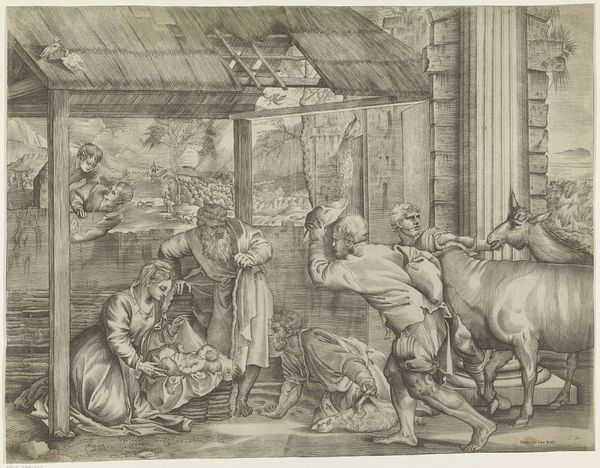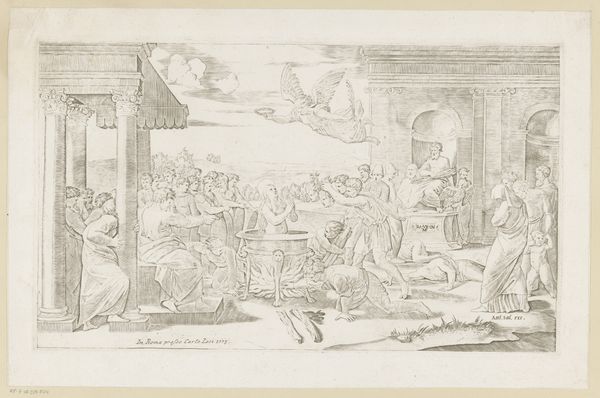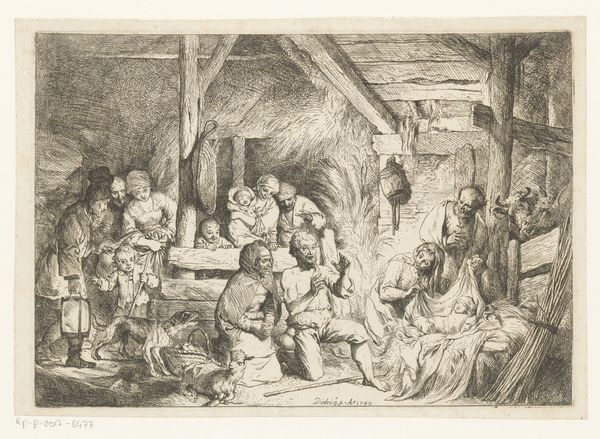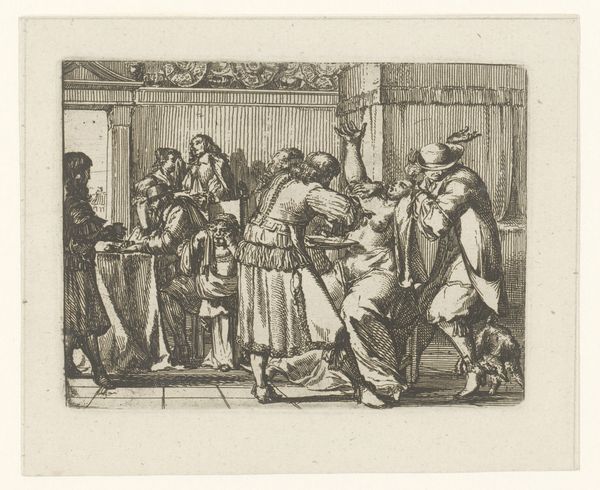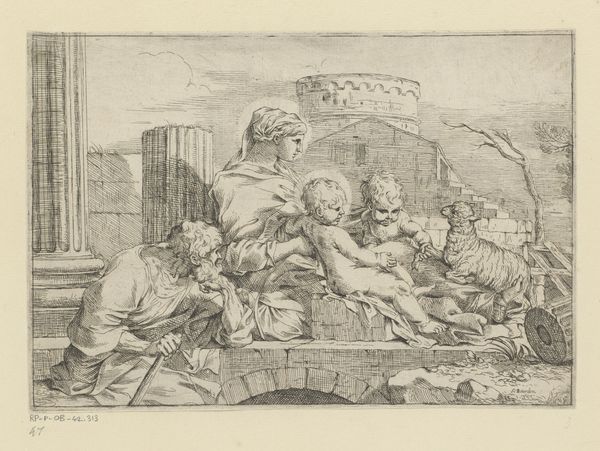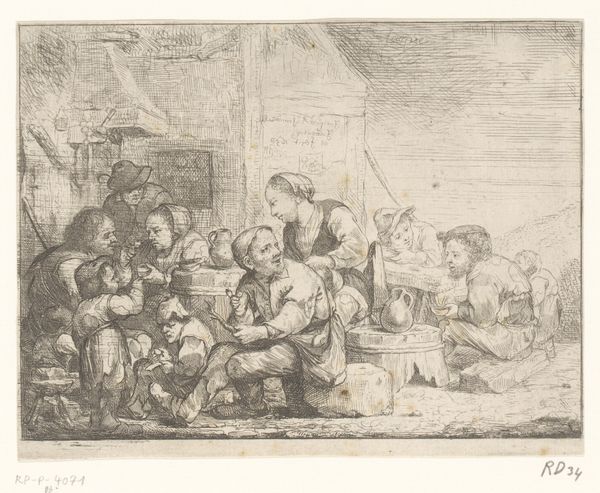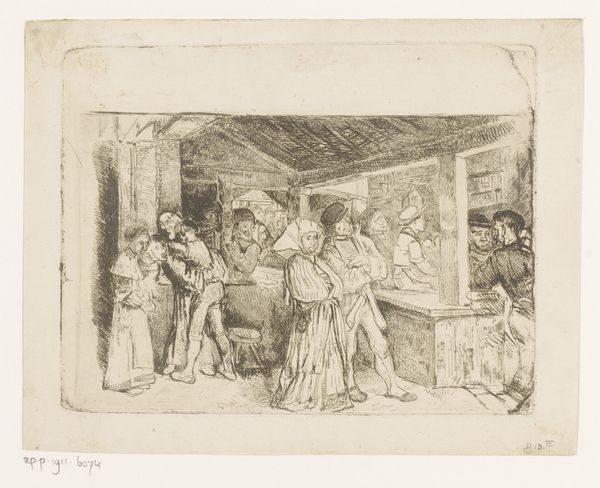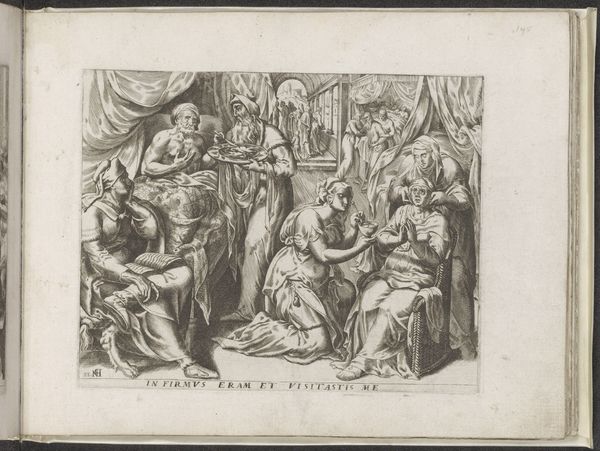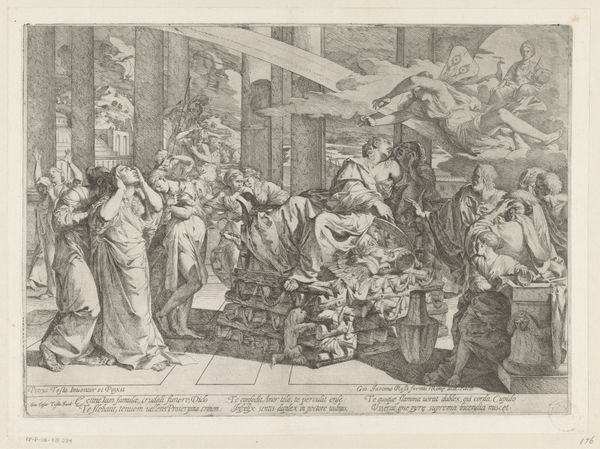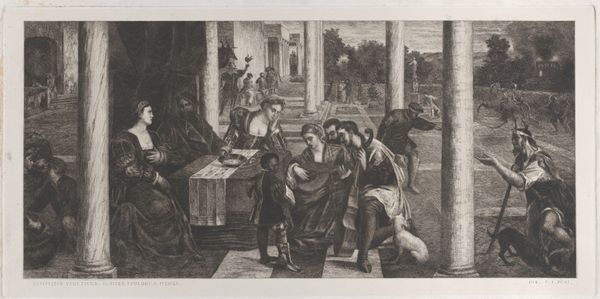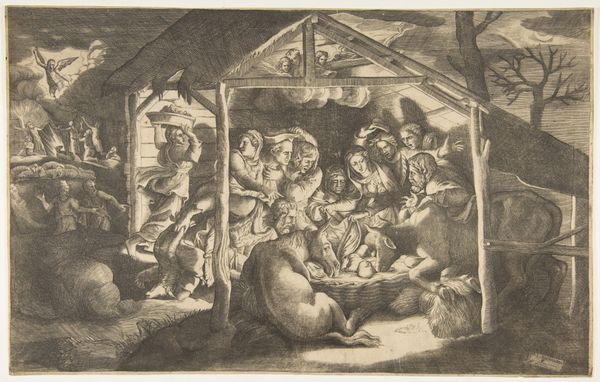
print, engraving
#
narrative-art
# print
#
ancient-mediterranean
#
genre-painting
#
history-painting
#
academic-art
#
engraving
Dimensions: height 248 mm, width 345 mm, height 203 mm, width 309 mm
Copyright: Rijks Museum: Open Domain
Editor: So this engraving, “Naval Battle in a Roman Arena” by Luigi Ademollo, made sometime between 1774 and 1849, really grabs me with its sort of removed perspective. It’s like we’re seeing something gruesome through a detached lens. What strikes you when you look at this print? Curator: I see a powerful example of how we’ve continuously reimagined our past. This scene of a naumachia, or mock naval battle, staged for Roman entertainment, carries potent symbolic weight. The figures in the foreground, seemingly detached, almost judgmental, become crucial. Consider the loaded symbolism here; it echoes, perhaps unintentionally, the spectacle and brutality that underpin empires. Editor: Brutality, yes, that's definitely part of my reading. I’m curious, the figures seem less engaged with the ‘battle’ and more with...themselves? Curator: Exactly. Their detachment asks us to question: what did such spectacles represent to the Romans themselves? Was it pure entertainment, a display of power, or something darker? The act of staging and viewing carries psychological echoes across millennia. What cultural memories did Ademollo hope to evoke, and which were simply resurrected in his imagination, through his work? Editor: I hadn’t really thought about it in terms of cultural memory, just the immediate gruesomeness of it all. It feels almost… contemporary in that sense, like reality TV. Curator: Interesting point. Think about how we consume images of conflict and disaster today. Does that distance change our relationship to suffering? The symbols remain, reshaped and repurposed, still carrying the weight of history, culture and even, dare I say it, psychology. What do you take away now? Editor: I now recognize the lasting and somewhat uncomfortable connections between ancient spectacles and our modern forms of entertainment, as well as the questions that this raises about our relationship with history and spectacle.
Comments
No comments
Be the first to comment and join the conversation on the ultimate creative platform.
